The 10 Most Infamous Black Hat Hackers In History
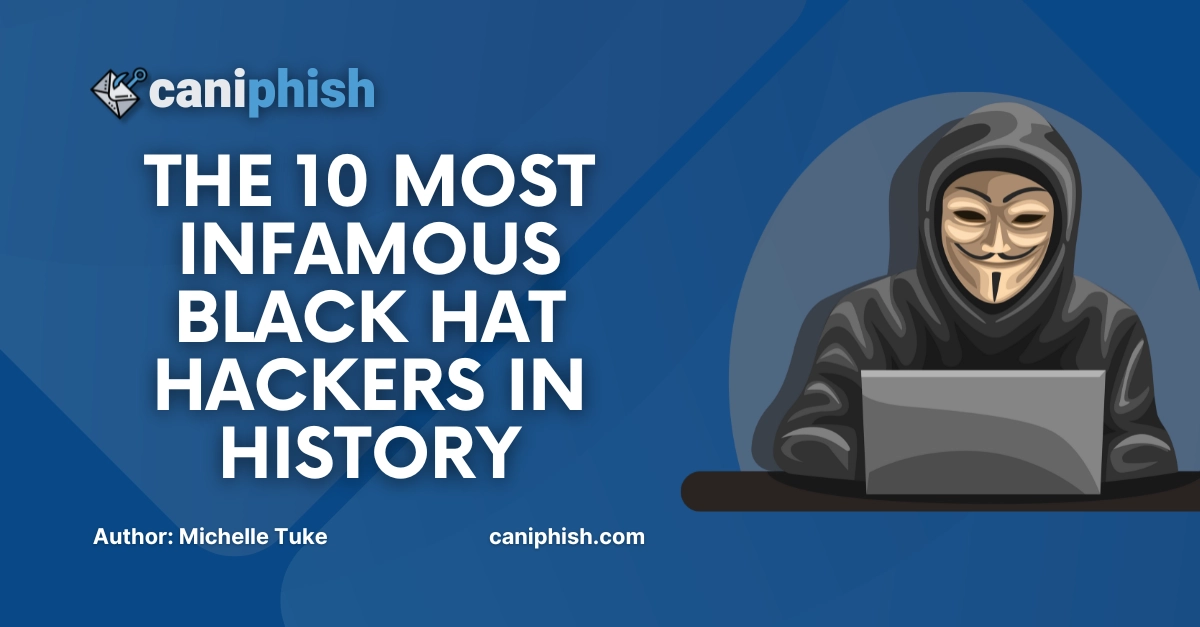
Looking to uncover the most infamous black hat hackers in history?
In this blog, we’re counting down 10 individuals who made global headlines for data theft, fraud, and digital chaos. Their stories aren’t just infamous. They’re fascinating! Proving that strong cybersecurity isn't optional, it's essential. Let’s dive in.
10. Astra

Astra is one of the most mysterious black hat hackers of all time. The identity was never publicly released, but it’s believed the hacker was a Greek mathematician at the time of arrest. Astra was active between 2002-2006 and hacked into French aerospace giant Dassault Aviation, which was responsible for military aircrafts like the Mirage and Rafale fighter jets.
For years, Astra exfiltrated highly sensitive weapons technology. Then sold the stolen data to hundreds of buyers with some clients believed to be state-level, defense firms, and underground brokers.
The breach cost Dassault an estimated $360 million in commercial losses, IP damage, and remediation. That's not including the reputational blow and potential national security implications.
lic record of the identity, the trail, or the outcome. Was Astra a man, woman, or even human? That's what makes it so legendary.What makes Astra stand out from other hackers is that there is no public record of the identity, the trail, or the outcome. Was Astra a man, woman, or even human? That's what makes it so legendary.
9. Jeanson James Ancheta
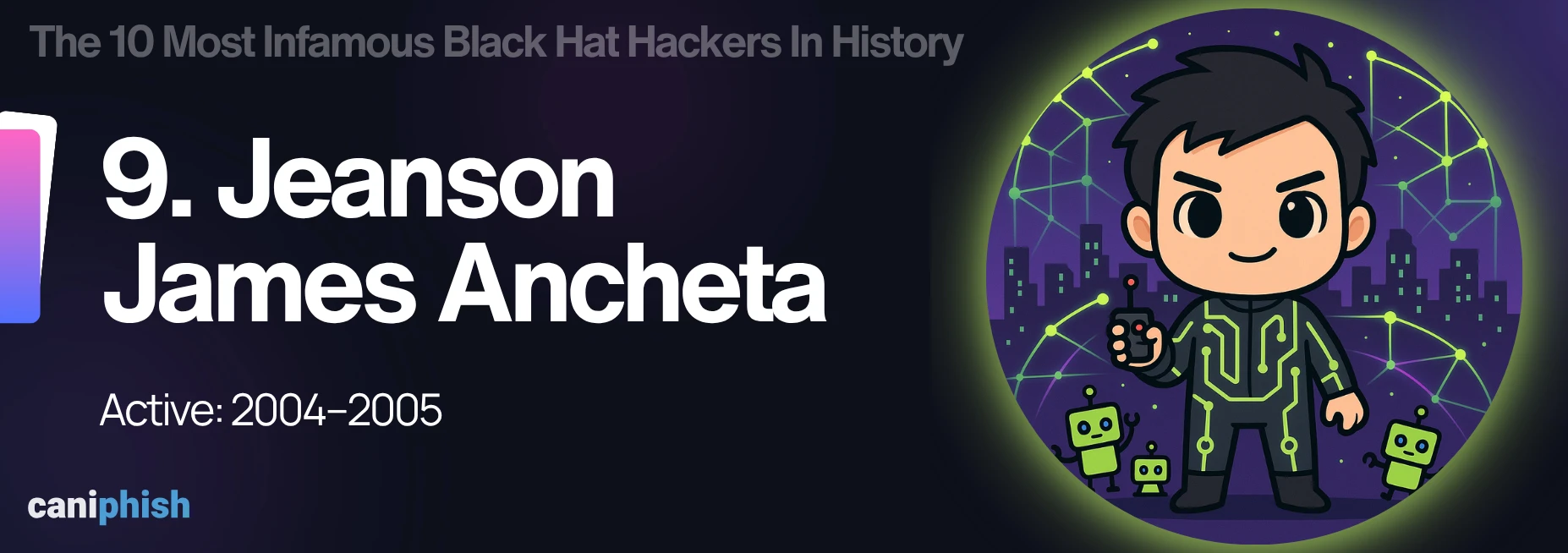
Jeanson Ancheta was a California-based hacker who made history with one of the first large-scale botnet attacks, back when most people didn’t even know what a botnet was.
In the early 2000s, he used a variant of the Rxbot worm to silently infect over 400,000 computers, turning them into a massive, remotely controlled network.
He then rented out access to this army of infected machines, allowing other criminals to use it for spam, DDoS attacks, and more. This became one of the earliest examples of “malware-as-a-business.” He reportedly earned around $60,000 from these operations.
The law caught up with him in 2005, when the FBI launched Operation Bot Roast. He was sentenced to 57 months in prison, becoming the first American ever jailed for profiting from a botnet.
8. Max Butler (aka Iceman)
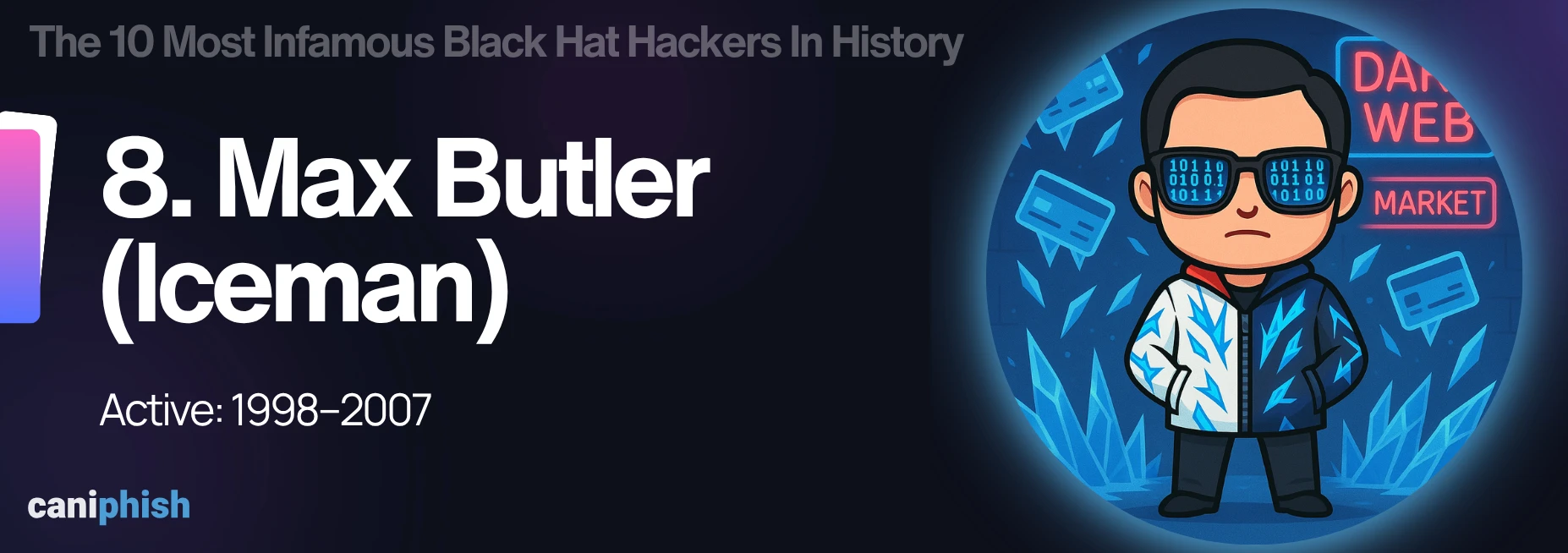
Max Butler was once a well-respected white hat hacker and security consultant. But instead of playing defense, he flipped to offense, secretly planting backdoors into the very systems he was hired to protect.
After an earlier arrest in the late 1990s, Butler cooperated with the FBI to reduce his sentence. While assisting federal investigators, he quietly returned to cybercrime behind the scenes.
He went on to steal nearly 2 million credit card numbers and merged several underground forums into one massive criminal marketplace, CardersMarket. His victims were hit with an estimated $86 million in fraudulent charges, making it one of the largest credit card fraud cases of its time.
In 2007, the FBI caught up with him. He was later sentenced to 13 years in federal prison and ordered to pay $27.5 million in restitution.
Proof that even the so-called “good guys” can turn when greed takes over the keyboard.
7. Jonathan James (aka c0mrade)

What were you doing when you were 15 years old?
At 15, Jonathan James had already hacked into more critical systems than most adults could imagine. He wasn’t in it for money, he was motivated purely by the challenge.
Between 1999 and 2000, Jonathan James breached high-profile government systems including the Department of Defense, NASA, and the Marshall Space Flight Center. These weren’t just any systems, they were considered locked down and secure.
He stole around $1.7 million worth of NASA software, including code used to control life-support systems aboard the International Space Station. We’re talking environmental controls like temperature and humidity, making this an extremely serious breach.
NASA was forced to shut its systems down for 21 days to investigate and secure their infrastructure.
Tragically, Jonathan James took his own life at just 24, believing he was being falsely accused of a crime he didn’t commit.
6. Kevin Poulsen (aka Dark Dante)
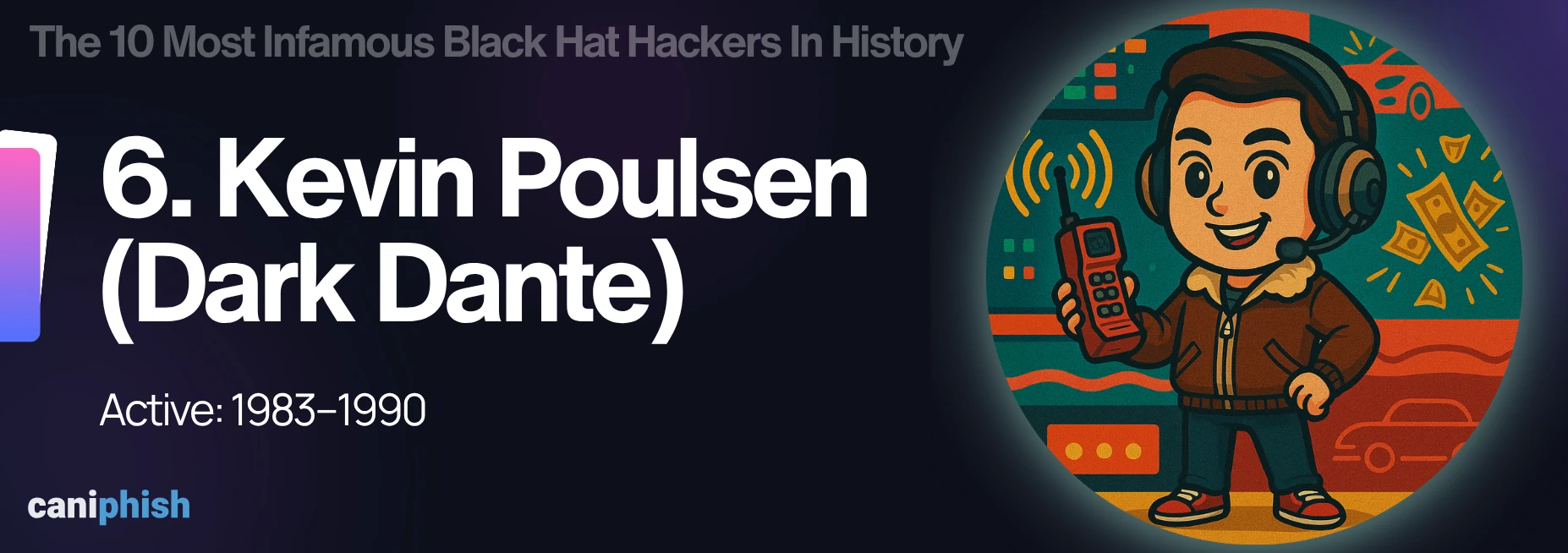
Ever wanted to win a big prize and secretly wished you could rig the system to make sure you won?
Well, Kevin Poulsen actually did it, and the prize was a brand-new Porsche 944 S2.
In 1990, Kevin Poulsen managed to take over the phone lines to the radio station KIIS-FM, in Los Angeles. This enabled him to be the 102nd caller and won him the car.
He'd already had a run-in with law, when he hacked into the ARPANET, the Pentagon’s computer network in 1983. He was just 20 years old at the time, so they let him off with a warning.
He then went on and broke into military and government systems, accessing classified files related to foreign policy and federal investigations.
Eventually, the law caught up with him. He was sentenced to 51 months in prison and ordered to pay $56,000 in restitution, making it one of the harshest penalties for a hacker at the time.
After serving his time, Poulsen flipped the script. He became a respected journalist and cybersecurity advocate, using his skills to expose digital threats rather than create them.
5. Gary McKinnon
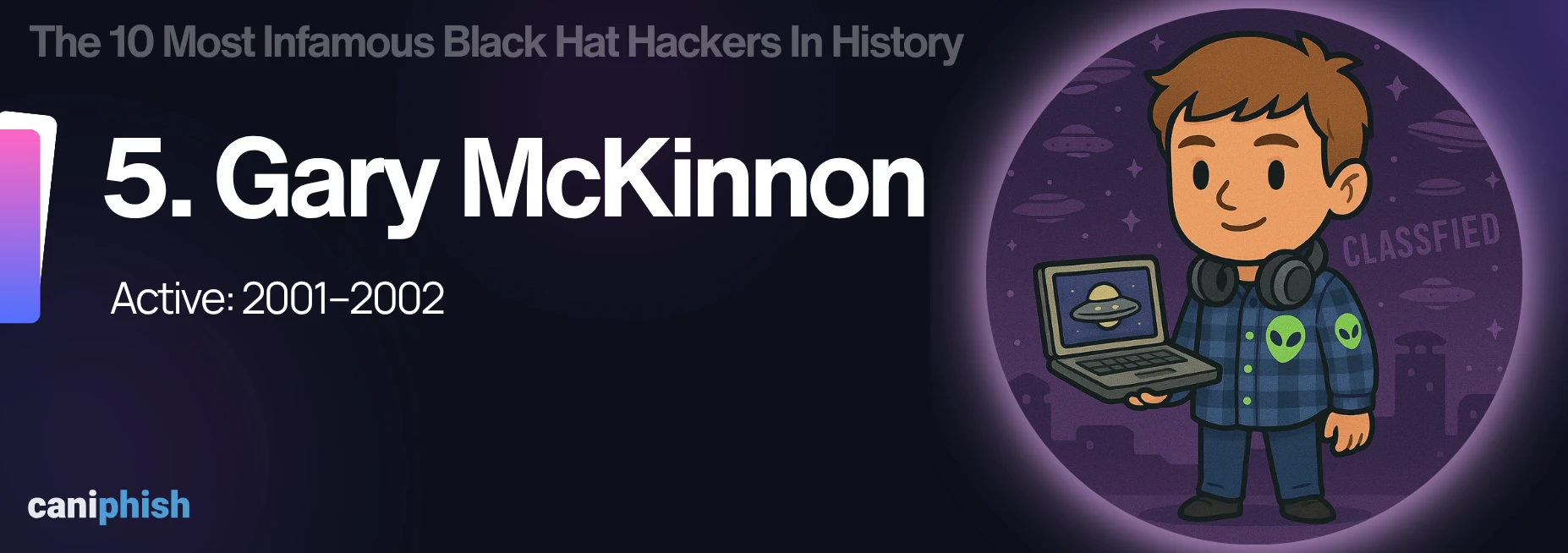
If anyone ever got close to the truth about aliens, it’s Gary McKinnon.
Gary McKinnon was a Scottish systems administrator with an obsession for UFOs. Between 2001 and 2002, he used weak passwords and unpatched vulnerabilities to hack into 97 computers belonging to NASA, the U.S. Army, Navy, Department of Defense, and Air Force. He wasn’t after money or fame, he was chasing proof that alien life exists.
He deleted files, disrupted critical systems, and left messages directly on the military systems he breached, claiming the US government was lying about alien technology.
He cost the military over $700,000 when he allegedly shut down the U.S. Army's Washington network for an entire day, causing operational disruption.
The U.S. tried to extradite him for over a decade, but the UK blocked the request, leaving Gary McKinnon a free man, still living in the UK, never tried in court, and still claiming he found evidence of a cover-up.
4. Adrian Lamo
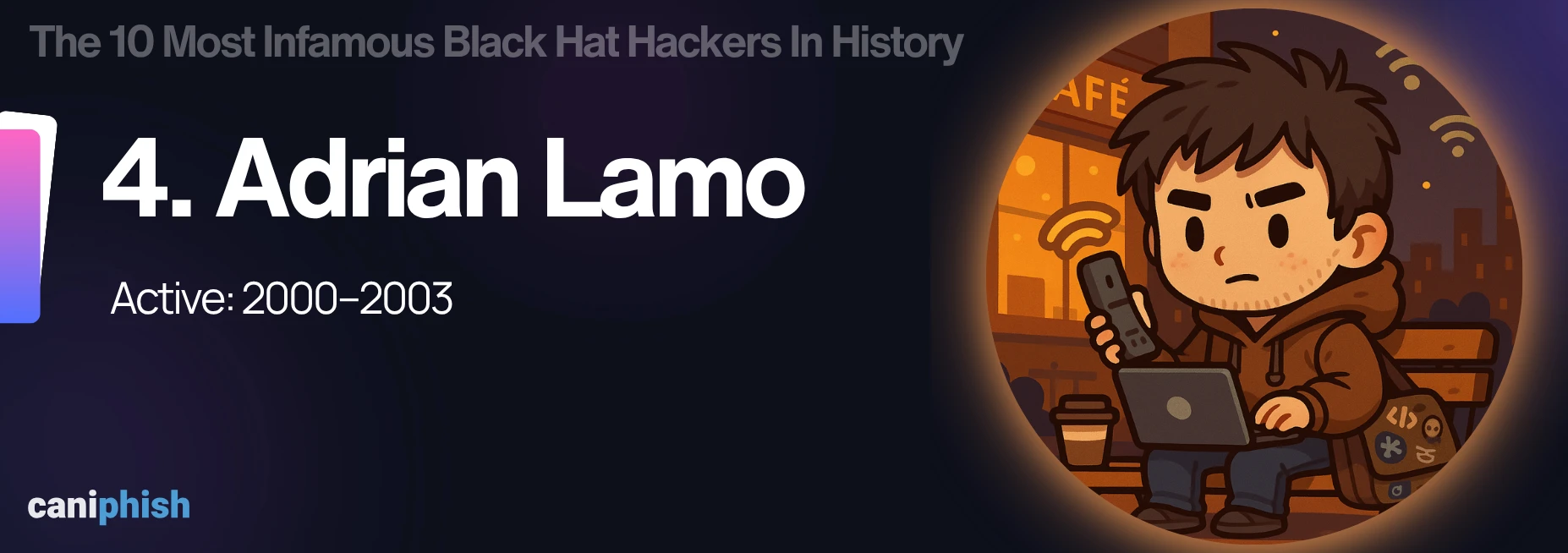
He was dubbed the “Homeless Hacker” because he often lived out of a backpack, couch-hopped, and used public libraries or coffee shops to launch his attacks.
What makes Adrian Lamo stand out from other black hat hackers, is that he wasn’t driven by money. For him, it was about curiosity, access, and ego. Unlike most, Lamo often claimed he hacked to help, not to harm.
He hacked into companies like Microsoft, Yahoo!, and The New York Times, gaining unauthorized access, sometimes under the claim of helping expose flaws.
Rather than selling the information, he’d often contact the company directly, disclosing what he uncovered, and occasionally offering assistance in fixing it.
In 2004, Lamo was sentenced to 2 years of probation, six months of home detention, and ordered to pay $65,000 in restitution for hacking the NYT.
3. Michael Calce (aka Mafiaboy)
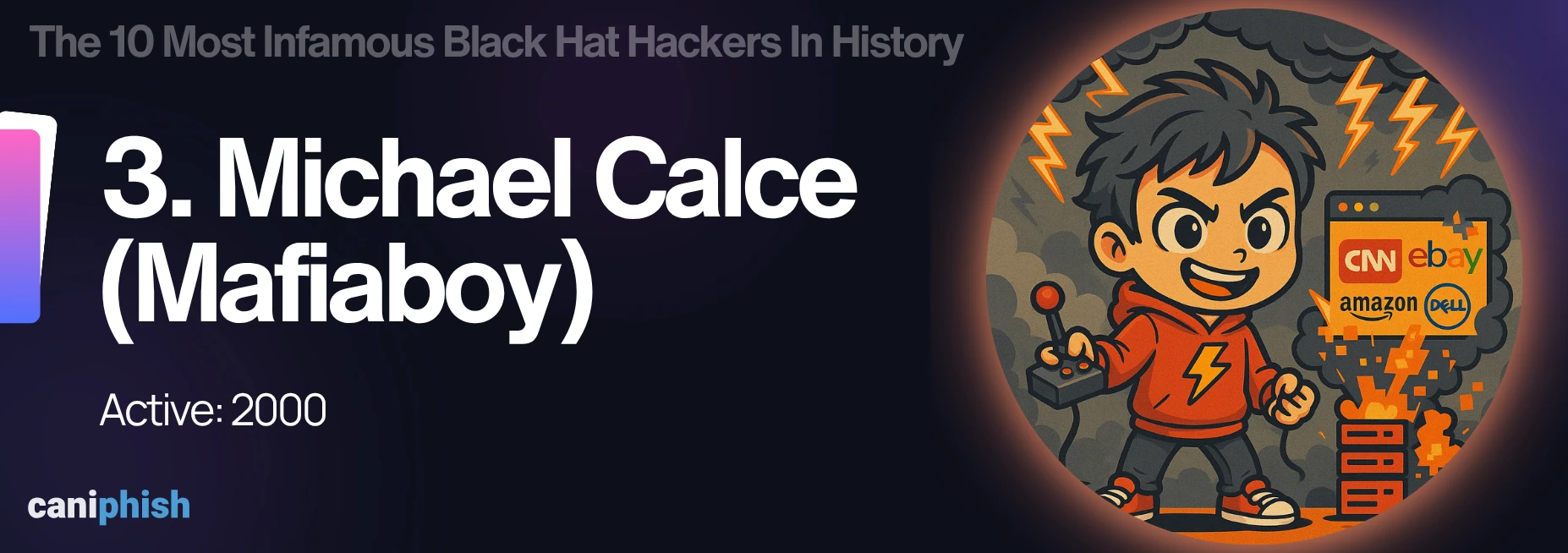
While most 15 year olds were playing hooky at school or going to the movies, Michael Calce was launching his first cyber-attack.
In 2000, he took down Yahoo! for an hour by flooding their servers with traffic using a botnet made up of compromised university and corporate systems. This type of attack is known as a Distributed Denial-of-Service (DDoS). He called the campaign “Project Rivolta."
He didn’t stop there. Over the following week, he hammered other major sites like CNN, eBay, Amazon, and Dell, triggering chaos across the web.
According to the U.S. GAO and FBI testimony, the total estimated damages were between $1.2 billion and $1.7 billion USD, factoring in service disruptions, mitigation costs, and lost revenue across affected companies.
His actions sent shockwaves through the business world and served as a wake-up call for organizations to strengthen their security measures against DDoS attacks.
He was arrested in 2000 and sentenced to eight months of open custody, a year of probation, restricted internet use, and a small fine.
Since then, he's switched sides and now works in cybersecurity, helping defend systems.
2. Albert Gonzalez
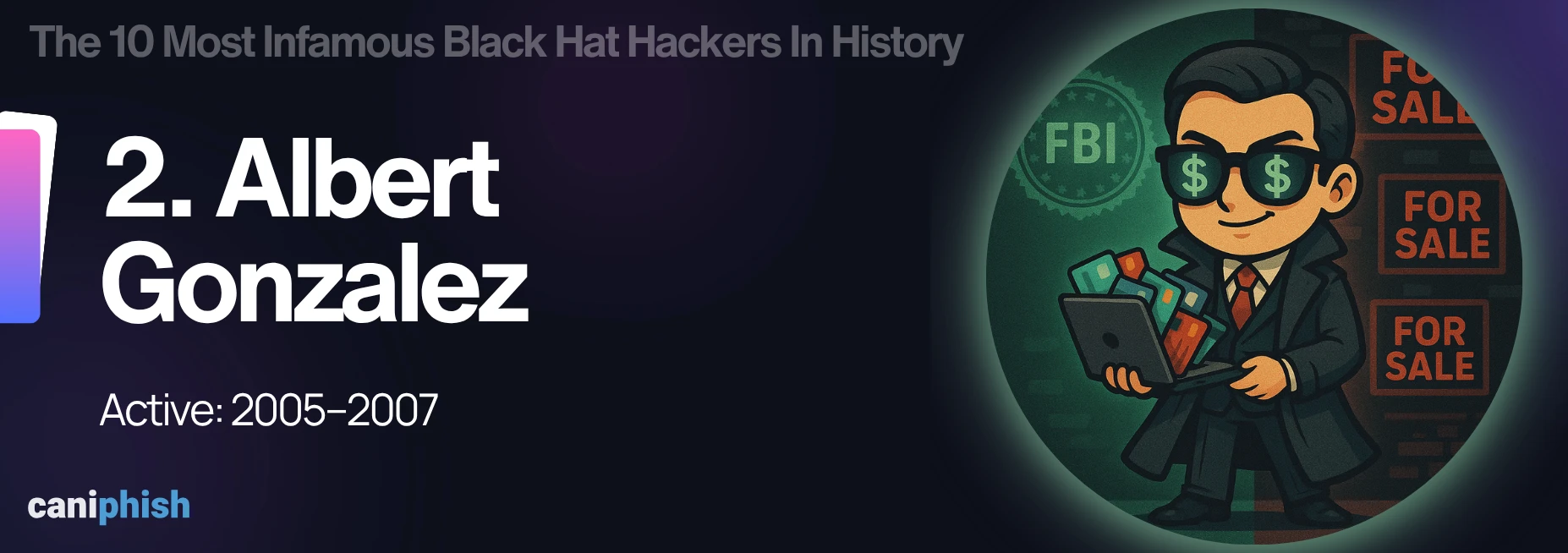
Albert Gonzalez isn’t just known for pulling off one of the biggest credit card thefts in history, what makes his story so interesting is that he was working as an informant for the U.S. Secret Service at the same time. Yep, he was supposed to help catch cybercriminals, but he was running a criminal empire on the side.
From 2005 to 2007, Gonzalez led a crew that broke into networks of major companies like TJX, Heartland Payment Systems, and 7-Eleven. They used SQL injection to get in, dropped backdoors, and deployed packet sniffing tools like ARP spoofers to scoop up credit and debit card data in real time.
Albert Gonzalez wasn’t just involved, he was the architect. He recruited hackers, set the technical direction, handled the laundering of stolen funds, and coordinated the sale of card data on underground forums. Everything went through him.
By the end of it, they’d stolen more than 170 million card numbers, selling the details on underground forums and causing hundreds of millions in financial damage.
In 2010, it finally caught up to him. He was sentenced to 20 years in federal prison, one of the harshest hacking sentences ever handed down in the U.S.
He thought he could play both sides. Instead, he got burned by both.
1. Kevin Mitnick
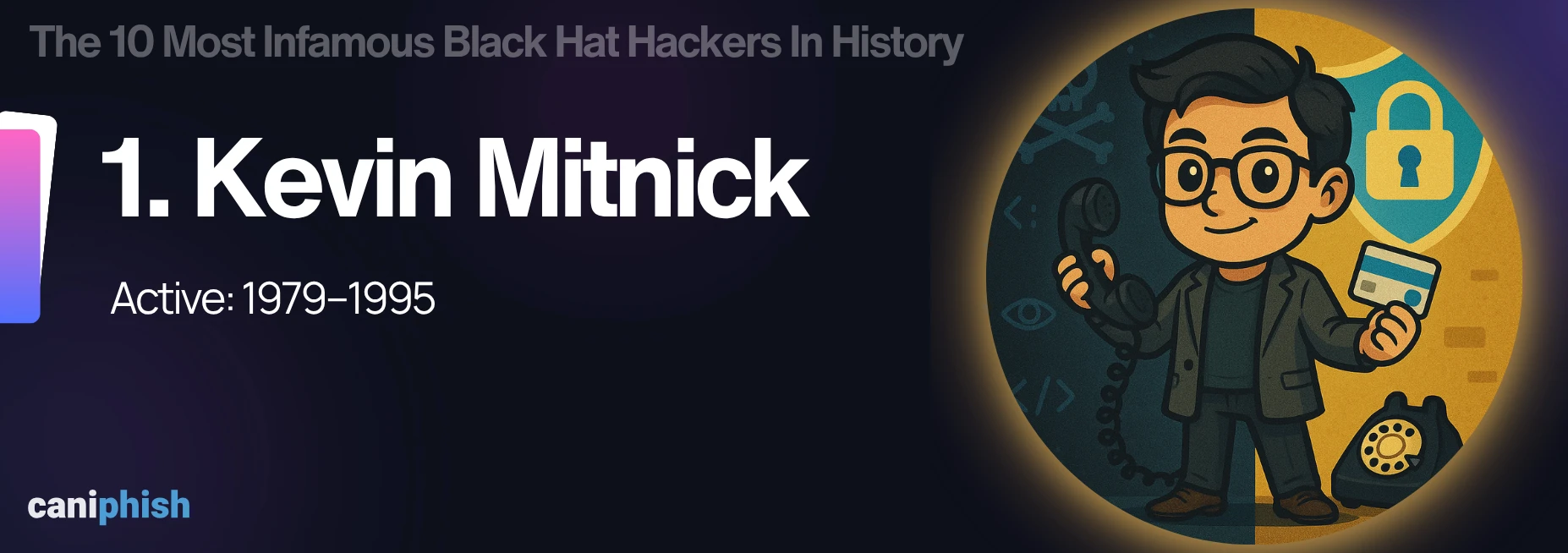
Coming in at number one is Kevin Mitnick, and for good reason!
In the late '80s, Mitnick used social engineering, phone phreaking, and clever exploits to infiltrate the networks of companies like Motorola, Nokia, IBM, and even the NSA.
The US government claimed he caused $80 million in damages, and his actions exposed serious flaws in both corporate and government cybersecurity.
His attacks weren’t about money. It was about challenge, curiosity, and control. What set him apart was how far ahead of his time he was, showing the world just how vulnerable systems really were, long before cybersecurity was a boardroom priority.
After a years-long game of digital cat and mouse, the FBI finally arrested him in 1995. He spent five years in prison, eight months of that in solitary confinement because officials feared he could start a nuclear war by whistling into a phone (yes, really).
After his release, Kevin Mitnick turned his life around and became a world-renowned white hat hacker, security consultant, and author. He spent the rest of his life helping companies defend against the very tricks he once mastered.
Kevin passed away in 2023, but his legacy as both black hat and white hat hacker remains unmatched.
Step Into The Mind Of A Hacker
The Social Engineer is a high-stakes, turn-based cyber game where you play as an up-and-coming criminal mastermind.
Play now!Wrapping Up
So there you have it!
Some were thrill-seekers, others digital outlaws, but many were simply ahead of their time. Their attacks exposed gaping holes in global infrastructure, forcing companies and governments to rethink how they defend themselves.
Ironically, a few of these black hat hackers later became the very thing they once hated, advisors, consultants, and even government collaborators. Because when someone breaks your system in ways you didn’t think possible, you suddenly want them on your side.
An Operations Analyst on a mission to make the internet safer by helping people stay a step ahead of cyber threats.
